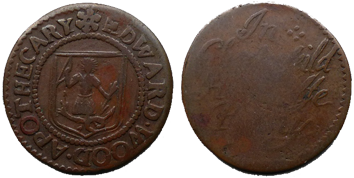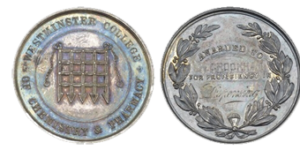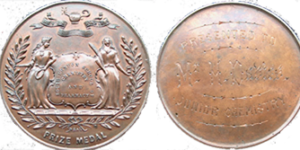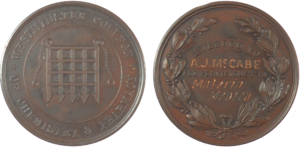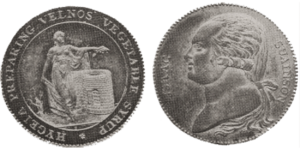Description
|
Obverse: EDWARD.WOOD.APOTHECARY Reverse: Chesterfeild His Halfe Penny In Britain, between 1648 and 1820 there were recurring shortages of low-denomination coins needed for the small change of everyday life. In order to solve this problem, local merchants supplied their own money. These pieces are known as Genuine Trade Tokens (GTT). The first era of the GTT began during the Cromwell Commonwealth (1648) and ended during the reign of Charles II (1679). During this epoch, 12,722 different varieties of farthings, halfpennies and pennies were produced by various trades, including the apothecaries. The most frequent apothecary symbol was the Apothecary Arms of London which portrayed Apollo (Father of Asclepius who had medicinal duties before Asclepius appeared), with a bow and arrow, standing astride the slain dragon of disease. The use of this symbol by apothecaries outside London probably indicated that the proprietor served his apprenticeship with the London guild. Reference: G.D. Hart, Canad. Med. Ass. J., 95, 1966, English token coins and medicine
|
